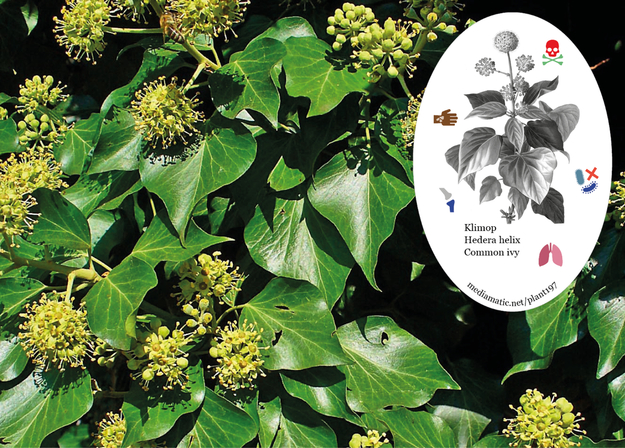Ivy is a bitter aromatic herb with a nauseating taste. It is often used in folk herbal remedies, especially in the treatment of rheumatism and as an external application to skin eruptions, swollen tissue, painful joints, burns and suppurating cuts. Recent research has shown that the leaves contain the compound 'emetine', which is an amoebicidal alkaloid, and also triterpene saponins, which are effective against liver flukes, molluscs, internal parasites and fungal infections. The leaves are antibacterial, antirheumatic, antiseptic, antispasmodic, astringent, cathartic, diaphoretic, emetic, emmenagogue, stimulant, sudorific, vasoconstrictor, vasodilator and vermifuge. The plant is used internally in the treatment of gout, rheumatic pain, whooping cough, bronchitis and as a parasiticide. Some caution is advised if it is being used internally since the plant is mildly toxic. Excessive doses destroy red blood cells and cause irritability, diarrhoea and vomiting. This plant should only be used under the supervision of a qualified practitioner. An infusion of the twigs in oil is recommended for the treatment of sunburn. The leaves are harvested in spring and early summer, they are used fresh and can also be dried. The German Commission E Monographs, a therapeutic guide to herbal medicine, approve Hedera helix for cough, bronchitis (see for critics of commission E). Source: https://pfaf.org/
Common ivy
Hedera helix
Find more about this plant on Wikipedia.
